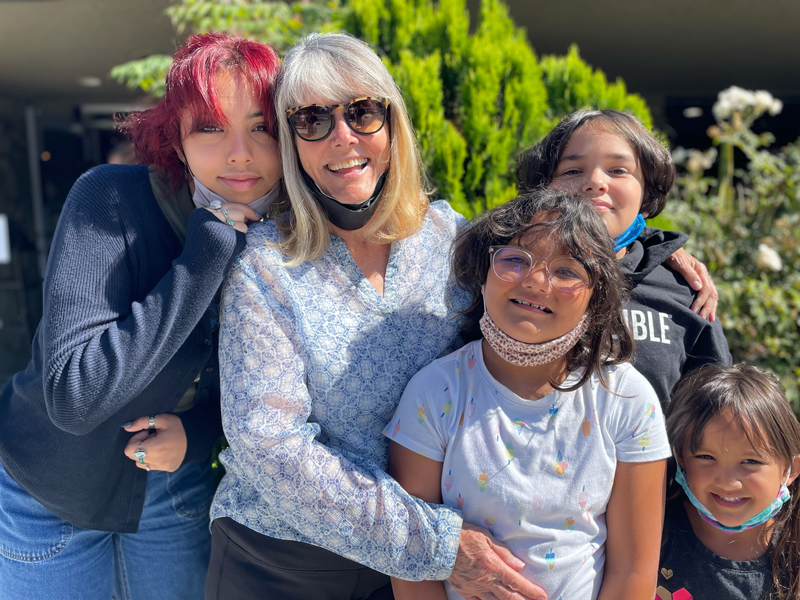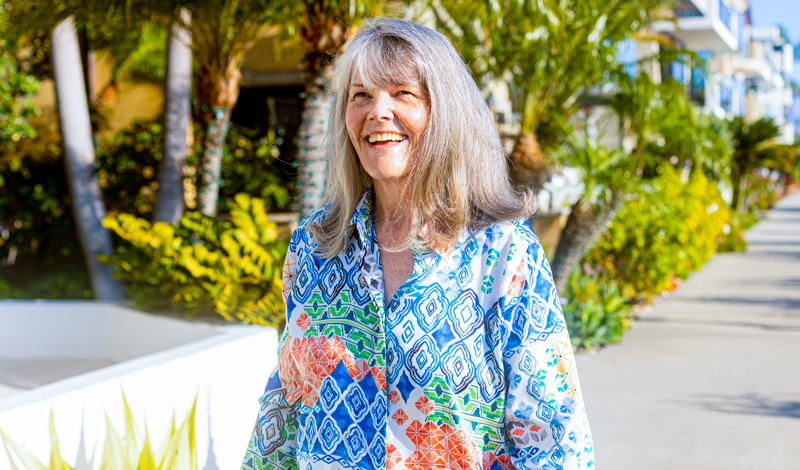by Terry Mitchell
Long Beach, Calif.
November 1966—the promise of music and drugs, about the only things that made me feel any good, regularly drew big crowds of youth to the night scene on the Sunset Strip. My friends and I milled about outside a club called Pandora’s Box, clogging street traffic, when we heard shouts of protest and pain. I looked up and saw it: a wave of police spilling fast down the Strip, dispersing the crowd with billy clubs—an event that would become known to history as the Sunset Curfew Riots. The grown-ups—local business owners and residents—had proclaimed us kids a nuisance, and the police were delivering the message.
The ’60s were a time of crises: the Cuban Missile Crisis, the Vietnam War, the assassinations of John F. Kennedy and, later, Martin Luther King, Jr. At 18, I was one year out from under my parents’ roof and finding the wider world no sunnier than the place I’d run from. Here, too, it seemed a misfortune to be seen or heard by grown-ups.
Running in the light of Sunset’s flashing neon billboards, in a jostle of flying elbows and hair, I wondered: Why are they hitting us? Where can I run?
It was my drug dealer who introduced me to Buddhism. He showed up to my place in the spring of 1967 at his usual time but, oddly, empty-handed.
“What,” I heard my roommate say at the door, “no drugs?” The door slammed, and she came inside throwing up her hands.
“‘No more drugs,’ he says! ‘I’m a Buddhist,’ he says!”
Bad news, but it stirred something in me. I’d been feeling, with the passing of every high, every party and love-in, a deepening emptiness.
In time, he came around again, extending, instead of drugs, an invitation to a Buddhist meeting. This time I was at the door before my friend could slam it.
“Actually, I’d love to come.”
Chanting Nam-myoho-renge-kyo quietly with the others in a West Hollywood home, I experienced a deep calm, and in that calm, a realization: I was on the brink. This is my last try, my last straw, I thought. If this doesn’t work, I’m through. But I also felt this hope coming alive, this will to live to see where the feeling might lead me.
I remember the smiling green eyes of one tiny woman, the district leader, whose home we were in. Both her and her home I came to know well. I’d come ranting, crying, dejected, etc., listing all my problems in a run-on sentence: My car was broke and me too broke to fix it and too hopeless to keep a job and my family was a mess. … She’d just listen and listen and then say, “Terry, no matter how bad it seems, you can transform anything by chanting.”
Never in my life had I felt so heard and seen by a grown-up. In her, I found the connection I’d secretly yearned for: a parent, an unshakable friend. She was one of many who guided me to the writings of Nichiren Daishonin and the guidance of Ikeda Sensei, which became a compass for my life. In the SGI, I felt I’d encountered, at last, grown-ups I could trust.
Fast forward to 2012, by which time I’d experienced all kinds of joys—marriage and motherhood among them—and sailed through many storms as well. But none prepared me for the loss of my husband, Guy, to cancer in July of that year. Unlike me, Guy had been a natural at sharing Buddhism. It’s something of an irony, then, that his passing shook my faith, opened a chasm in my heart and cast me over the brink. I don’t think I’ll heal from this, I thought. My daughters, Stacey and Kimberly, too, felt their worlds turned upside down.
The night he died, a friend in faith drove three hours to chant with me beside him in repose. It was a reminder to me of what I’d found in that West Hollywood home, years ago as a runaway youth—a family.
As we chanted, his face seemed to me to take on a rosy hue, relaxing into a slight smile.
I’ve fulfilled my mission in this life, his contented look seemed to say. And how could I doubt him? He’d shared Buddhism with thousands of people and raised with me the most beautiful family. What was left to me was to fulfill my mission and become a pillar for my daughters.

With time and abundant daimoku, life began to move again. I started managing some of the hair salons owned by my youngest and her husband. Though heartbroken, a funny thing happened: I began to see the salons as Guy would have—as treasure troves of young people waiting to hear about the Mystic Law. More than ever, I began to lend an ear to these youth, as someone had once done for me. “Mama Terry” they started calling me, because they knew they could come to me with anything and be encouraged.
In March 2018, I passed the door of one young stylist and recognized immediately a person on the brink.
“Are you OK,” I asked.
“No.”
I went in, and we spoke. Then I gave him a Nam-myoho-renge-kyo card. “Today, I want you to say this in between sessions with each of your clients. I’ll be back at the end of the day.”
When I knocked on his door, the young man who answered was completely changed.
“I feel so much better,” he said and held up the card. “What is this?”
I’ve begun planting seeds wherever I go—Trader Joe’s, the hardware store, my favorite coffee shop. I focus on the connection, not any strategy. So many tell me that Nam-myoho-renge-kyo was exactly what they needed to hear.
The times are different, but the sense of being lost, of the world being turned upside down, is, for many young people, the same as I experienced at that age. It’s clear that young people need as much as ever a compass—a great philosophy and mentor. They need true friends. Having encountered such a mentor and such friends, I can say with confidence that they will find none greater or truer than in the SGI.
Q: What advice would you give the youth?
Terry Mitchell: To me, coming of age in the ’60s and ’70s, it was clear: Many of society’s leaders make promises without intending to fulfill them. What stood out to me about Ikeda Sensei was that everything he said he’d do, he did it, no matter what. He is someone you can trust.
You are reading {{ meterCount }} of {{ meterMax }} free premium articles

